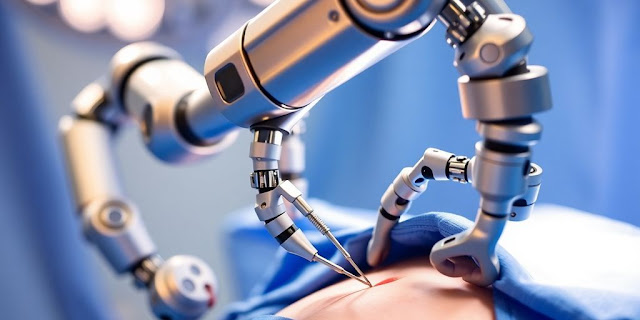In a groundbreaking medical advancement, an AI-powered robot has successfully performed a complex part of a gallbladder removal surgery. This marks a significant leap towards autonomous surgical systems, as the robot was trained using videos of human surgeons and demonstrated the ability to adapt to unexpected scenarios, moving beyond pre-programmed tasks to intelligent, real-time decision-making.
AI Robot Achieves Surgical Autonomy
A robot has successfully performed a realistic surgical procedure on its own, specifically a complex phase of a gallbladder removal. This achievement, detailed in the journal Science Robotics, represents a major step forward from previous robotic surgeries that required highly controlled environments and rigid pre-determined plans.
How The Robot Was Trained
The robot's remarkable capability stems from its training methodology, which utilised the same machine learning architecture that powers ChatGPT. Instead of being explicitly programmed for every step, the robot learned by observing videos of human surgeons performing the procedure. This allowed it to develop a nuanced understanding of surgical tasks.
Key aspects of its training and capabilities include:
Video-Based Learning: The robot was trained by analysing numerous videos of human surgeons, enabling it to grasp the intricacies of the procedure.
Voice Command Responsiveness: It could respond to spoken commands, such as "grab the gallbladder head" or "move the left arm a bit to the left," and learn from the feedback received.
Adaptability: Crucially, the robot demonstrated the ability to adapt to unexpected scenarios, such as changes in organ appearance due to dye, suggesting its potential for real-life medical emergencies.
Key Takeaways
The robot successfully performed a complex part of a gallbladder removal, marking a significant advancement in autonomous surgery.
Its training involved learning from videos of human surgeons, rather than being pre-programmed.
The system can respond to voice commands and adapt to unforeseen circumstances during surgery.
This breakthrough brings clinically viable autonomous surgical systems closer to reality.
The Future of Robotic Surgery
While robotic surgery is already common in the NHS, it typically involves a human surgeon controlling the robot. This new development, however, points towards a future where robots can perform complex procedures with a higher degree of autonomy. Axel Krieger of Johns Hopkins University likened the advancement to "teaching a robot to navigate any road, in any condition, responding intelligently to whatever it encounters," a significant leap from simply following a mapped route.

This breakthrough builds upon a 2022 achievement where a robot performed autonomous surgery on a pig, but that required specially marked tissue and a highly controlled environment. The current system's ability to learn and adapt in a more unpredictable setting is a testament to the rapid progress in AI and robotics, paving the way for potentially transformative changes in patient care.


